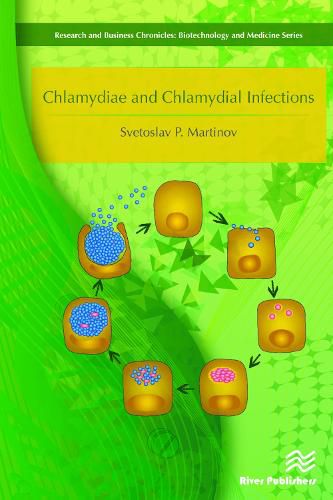Readings Newsletter
Become a Readings Member to make your shopping experience even easier.
Sign in or sign up for free!
You’re not far away from qualifying for FREE standard shipping within Australia
You’ve qualified for FREE standard shipping within Australia
The cart is loading…






Chlamydiae are a group of obligate intracellular microorganisms with a homogeneous group-specific antigenic structure, and a unique mode of development. The infections caused by them are unprecedented and wide-spread throughout the world, including a broad range of hosts among domestic and animal species and humans, and a variety of clinical manifestations. The uniqueness of chlamydia pathology consists mainly in the fact that the agents of the individual diseases are so close in their biological properties that they are represented only by the single genus Chlamydia, which includes all currently recognized species.Although chlamydiae and chlamydial infections were discovered a long time ago, they are still under-researched and relatively unknown to broad circles of microbiologists, virologists, epidemiologists and clinicians. A number of issues relating to molecular biology, pathogenesis, mechanisms of Chlamydia development and their interactions with cells, as well as their genetic conditioning and regulation, remain unclear. The same is true for ambiguities, problems and contradictions related to epidemiology, diagnostic approaches, immunity and vaccines. Based on scientific facts and the analysis of literature, and the experience of the author, Chlamydiae and Chlamydial Infections attempts to shed light on the cited problems, in terms of modern microbiology, cell biology and molecular biology. The scientific topics discussed include:* Biological, morphological and antigenic properties of Chlamydia spp* Genes, genomic structure and genetic regulations* Conventional diagnostic methods and examinations* Detection and differentiation of Chlamydia organisms by DNA detection systems* Clinical forms and manifestations and drug therapy* Pathology* Epidemiological peculiarities of Chlamydia
induced diseases in animals and humans* Immunity and vaccines
$9.00 standard shipping within Australia
FREE standard shipping within Australia for orders over $100.00
Express & International shipping calculated at checkout
Chlamydiae are a group of obligate intracellular microorganisms with a homogeneous group-specific antigenic structure, and a unique mode of development. The infections caused by them are unprecedented and wide-spread throughout the world, including a broad range of hosts among domestic and animal species and humans, and a variety of clinical manifestations. The uniqueness of chlamydia pathology consists mainly in the fact that the agents of the individual diseases are so close in their biological properties that they are represented only by the single genus Chlamydia, which includes all currently recognized species.Although chlamydiae and chlamydial infections were discovered a long time ago, they are still under-researched and relatively unknown to broad circles of microbiologists, virologists, epidemiologists and clinicians. A number of issues relating to molecular biology, pathogenesis, mechanisms of Chlamydia development and their interactions with cells, as well as their genetic conditioning and regulation, remain unclear. The same is true for ambiguities, problems and contradictions related to epidemiology, diagnostic approaches, immunity and vaccines. Based on scientific facts and the analysis of literature, and the experience of the author, Chlamydiae and Chlamydial Infections attempts to shed light on the cited problems, in terms of modern microbiology, cell biology and molecular biology. The scientific topics discussed include:* Biological, morphological and antigenic properties of Chlamydia spp* Genes, genomic structure and genetic regulations* Conventional diagnostic methods and examinations* Detection and differentiation of Chlamydia organisms by DNA detection systems* Clinical forms and manifestations and drug therapy* Pathology* Epidemiological peculiarities of Chlamydia
induced diseases in animals and humans* Immunity and vaccines